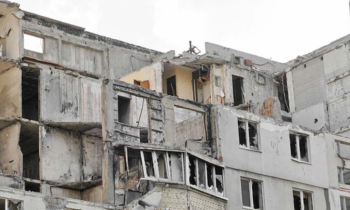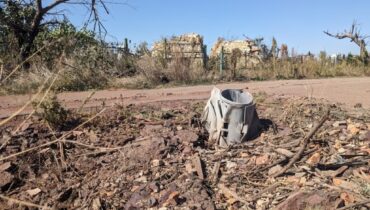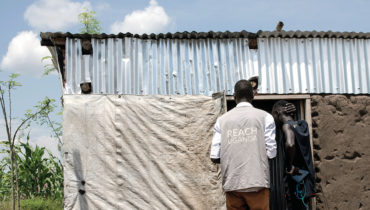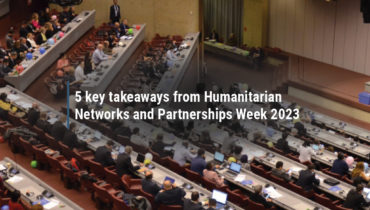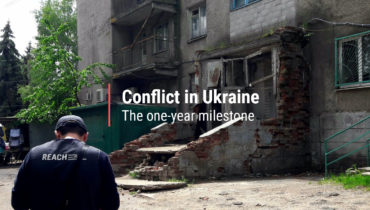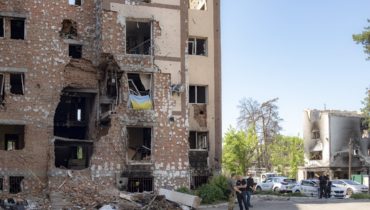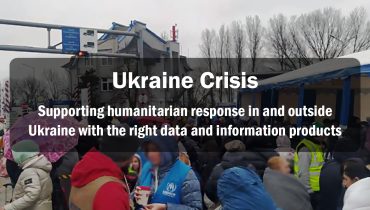Ukraine: REACH comprehensive assessment of humanitarian needs in Eastern Ukraine informs humanitarian planning and response
23 November 2016
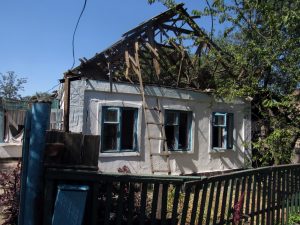 More than two and half years after the beginning of the conflict in Eastern Ukraine, recent reports have documented more than 9,000 civilian and military causalities, 20,000 houses damaged, and an annual gross domestic product (GDP) decreased by 9% in 2015, while the OSCE Monitoring Mission report numbers of daily ceasefire violations close to the contact line. The multifaceted needs of the crisis-affected population remains of concern: vulnerable populations in Government Controlled Areas (GCAs) in Donetsk and Luhansk oblasts continue to experience constraints in accessing housing, public services and income generating activities, thereby increasing their vulnerability to external shocks.
More than two and half years after the beginning of the conflict in Eastern Ukraine, recent reports have documented more than 9,000 civilian and military causalities, 20,000 houses damaged, and an annual gross domestic product (GDP) decreased by 9% in 2015, while the OSCE Monitoring Mission report numbers of daily ceasefire violations close to the contact line. The multifaceted needs of the crisis-affected population remains of concern: vulnerable populations in Government Controlled Areas (GCAs) in Donetsk and Luhansk oblasts continue to experience constraints in accessing housing, public services and income generating activities, thereby increasing their vulnerability to external shocks.
To provide timely and accurate information on such vulnerabilities, REACH, on behalf of the Ukraine Humanitarian Country Team (HCT), conducted an Inter-Agency Vulnerability Assessment (IAVA) in eastern Ukraine, evaluating the humanitarian needs of internally displaced persons (IDPs) and host communities. This assessment provides a snapshot of the challenges faced by thousands of households in the two eastern oblasts divided by the conflict, and is the product of a comprehensive secondary data review, primary data collection including more than 2,600 household surveys and extensive validation with humanitarian partners.
Key findings from the assessment show that a large proportion of displaced households come from urban centres close to the contact line, underlying the need for a response tailored to this pre-conflict reality: a mostly urban population resettling in host communities already experiencing prior social and economic difficulties. Additionally, needs in terms of protection are manifold and revolve around supporting these conflict-affected households in ensuring they receive necessary support towards accessing social and IDP benefits; minimizing risks in terms of unexploded ordnances (UXO); protecting victims of gender-based violence; supporting families caring for unrelated children; and providing legal assistance to address housing rights violations.
Loss of livelihoods have detrimental negative effects on households’ access to basic services and on the ability to secure enough quality food, forcing them to adopt negative coping strategies such as reduced expenditure in health and education. Prices of medicines and medical consultations were reported as the most important issue in terms of access to healthcare across both population groups. Housing and winterization needs show that increased utilities costs for heating will likely exacerbate households’ vulnerabilities to cold temperatures and put additional pressure on low incomes especially for those households along the contact line.
The IAVA conducted by REACH provides on the one hand this comprehensive household-level snapshot of humanitarian needs in eastern Ukraine; on the other hand, the added value of the assessment is a substantial dataset that humanitarian actors will be able to use in their 2017 response programming cycle, acting as a key source of information for the Humanitarian Needs Overview and Humanitarian Response Plan for Ukraine.


